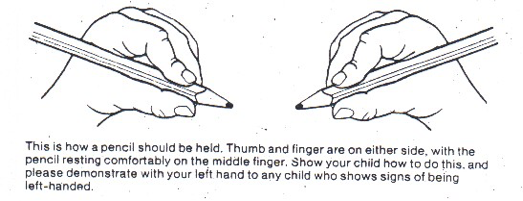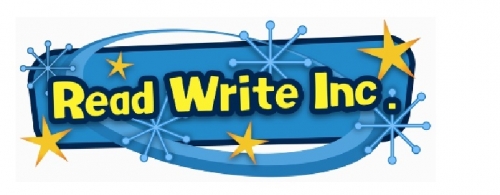Early Years Foundation Stage (EYFS/Reception Class)
The Early Year's Foundation Stage
The Early Years Foundation Stage (EYFS) begins from birth, then in school for the Reception Year and ends the summer that children transition into Year One (when all the children in the class will be five years old). Whilst your child is in the Early Years Foundation Stage, they will experience activities which will help them progress in their development and learning. The Early Learning Goals establish expectations for most children to reach by the end of the Reception year. These goals are organised into seven areas of learning and provide the basis for planning and assessment throughout the EYFS. The seven curriculum areas of learning are made up of three prime areas and four specific areas. Three Prime Areas:
- Personal, Social and Emotional Development (Self Regulation, Managing Self, Building Relationships),
- Physical Development (Gross Motor Skills, Fine Motor Skills),
- Communication and Language (Listening, Attention and Understanding, Speaking)
Four Specific Areas:
- Literacy (Word Reading, Comprehension, Writing),
- Mathematics (Number, Numerical Patterns),
- Understanding of the World (People, Culture and Communities, The Natural World, Past and Present)
- Expressive Arts and Design (Creating with Materials, Being Imaginative and Expressive)
New Curriculum 2021
The New EYFS Framework became statutory in September 2021. We follow the statutory framework alongside guidance such as 'Development Matters' to plan learning and experiences for our children. This also feeds into our own curriculum documents.
Statutory Framework for the Early Years
Characteristics of Effective Learning
We value the Characteristics of Effective Learning and therefore these are at the core of our curriculum and interactions with children. There are three specific Characteristics and these are explained below.
Playing and Exploring
Children are encouraged to play with what they know and to develop the confidence to ‘have a go’. We offer our children an experience that will foster a love of learning within a safe and stimulating environment. We build positive and secure relationships which allow our children to flourish.
Active Learning
We have both an indoor and an outdoor environment in our Early Years setting. These are carefully resourced to support our children to become independent learners. Children are supported to be more resilient: to keep on trying and achieve what they set out to do, even if it is difficult. We aim to follow the children’s interests in our provision which develops high levels of engagement and motivated to learn.
Creating and Thinking Critically
As children engage in a broad range of activities in Early Years, they begin to actively think about the meaning of what they are doing. Children will begin to generate new ideas, make links between experiences and learning and become problem solvers.
Progression Maps and Planning
Please see below in the FILES section for progression maps for each area of learning and planning for each half term.
Assessment arrangements in the EYFS
At the end of Reception, the Foundation Years statutory framework is used to sum up each child’s development and learning achievements. The framework is based on practitioners’ ongoing observation and assessments in all the areas of Learning and Development. Judgements against these scales are made from observation of consistent and independent behaviour, predominantly children’s self-initiated activities. This information is passed on to the child’s new teacher in Key Stage 1.
Sharing books in the EYFS
- Take a few minutes to sit in a relaxed, uninterrupted situation with your child.
- Move your finger gently along the line of writing as YOU read.
- Look at the pictures and get your child to talk about them.
- Ask questions about the story – either referring directly to it (how, when, what, who) or questions that require inference (what might happen next? why?).
- Let your child re-tell the story back to you – even if this is memorising or making up the story from the pictures. These are all part of the early stages of sharing books and learning to read.
- Don’t worry if your child chooses the same book on several occasions. The familiarity of a well-known story ensures success and increases confidence.
- Use constant praise for careful listening.
- Visit your local library.
Phonic development in the EYFS
The Government strongly recommend the use of synthetic phonics when teaching early literacy skills to children. Synthetic phonics is simply the ability to convert a letter or letter group into sounds that are then blended together into a word.
At Bryn St Peter's Primary School, we are using the Read Write Inc (RWI) programme to get children off to a flying start with their literacy. RWI is a method of learning based upon letter sounds and phonics, and we use it to aid children in their reading and writing.
Reading opens the door to learning. A child who reads a lot will become a good reader. A good reader will be able to read more challenging material. A child who can read more challenging material is a child who will learn. The more a child learns, the more he or she will want to find out. Using RWI, the children learn to read effortlessly so they can put all their energy into comprehending what they read. It also allows them to spell effortlessly so they can put all their energy into composing what they write. The children are assessed regularly and grouped according to their ability. They will work with a RWI trained teacher or teaching assistant. In addition to the RWI, children will also be working on writing skills in their classes with their own teacher.
Reading
When using RWI to read the children will:
- Learn 44 sounds and the corresponding letter/letter groups using simple prompts.
- Learn to read words using sound blending (Fred talk).
- Read lively stories featuring words they have learnt to sound out.
- Show that they comprehend the stories by answering 'Find It' and 'Prove It'.
Writing
When using RWI to write the children will:
- Learn to write the letter/letter groups which represent the 44 sounds.
- Learn to write words by saying the sounds and graphemes (Fred fingers).
- Learn to write simple then more complex sentences.
- Compose stories based on story strips.
- Compose a range of texts using discussion prompts.
Talking
When using RWI the children will also work in pairs:
- To answer questions.
- To practise every activity.
- To take turns talking and listening to each other.
- To give positive praise to each other
Blending
Help your child learn to read words by sounding-blending (Fred talk) eg. c-a-t = cat, sh-o-p = shop. Children learn to read words by blending the letter-sounds that are in the Speed Sounds set (shown further down the page).
Help your child to say the pure sounds ('m' not 'muh', 's' not 'suh' etc.) as quickly as they can, and then blend the sounds together to say the whole word.
Support your child at home using the following guide:
Reading Books Sent Home
Children in Reception who are learning the first 44 letter sounds and are not blending fluently will bring home sound sheets and picture books for you to read with them.
Once children can blend fluently and know the first 44 sounds they will bring home Ditty sheets or a red Ditty book and a RWI bookbag book.
After ditty books, children bring home a RWI book and a decodeable book. These will be changed every week.
Read Write Inc Books: (This is your child's main reading book) Please encourage your child to read though the speed sounds page first, then the green and red words page and then check your child understands the meaning of words on the vocabulary check page, before they start reading the book. Your child will have read this book at least three times before they bring it home. They should be able to read this book with fluency and expression by the time they bring it home and they should have a good comprehension of what the book is about. At the back of the book are find it/prove it questions for you to do with your child.
Visit the Oxford Owl website (external link) which has over 100 free ebooks for to enjoy with your child.
What Else?
What else can I do to help my child learn to read?
Using the RWI starter pack given to you by school will enable children to continue to develop their phonic skills. Please refrain from teaching children new sounds until they have been taught at school, the sounds taught are displayed in class and on the class page.
Reading a variety of books (fiction, non-fiction, rhymes etc.) Discuss the different features of the books. Talk about the books and other reading materials that you have shared. Explain the meaning of new words. See if your child could change a part of the story to make a new version. You could use puppets or soft toys to retell the story. Most importantly though, show that fun can be gained by listening to stories and reading a range of texts, eg. cereal packets, shopping lists, road signs, web pages, magazines, comics, newspapers etc.
Finally, don't worry if your child is struggling at first with their sounds and words, they will get there in their own time. If you have time (we know it is very precious!), we would urge you to try and read stories to your child before they go to bed. This will help develop a wider vocabulary which makes a vast difference to their quality of writing but it will also encourage them to enjoy a good story.
Useful Websites
- Read Write Inc - for more information and ideas for supporting your child visit the RWI website
- Oxford Owl - visit the Oxford Owl website which has over 100 free ebooks for to enjoy with your child
- YouTube: Phonemes Pronunciation Guide - a video clip, demonstrating how we produce our pure sounds to help during our Read Write Inc lessons
- Family Learning: Phonics Games - Phonics games will help your child to practise sounding out words, which will help them to read
- ICT Games: Word Reader - Listen to the word and choose which flower has that word underneath it
Progression in handwriting in the EYFS
We do not expect children coming into Reception to be able to write their name but if they can and want to have a go, please encourage this.
 Children are first encouraged to use large-scale movements:
Children are first encouraged to use large-scale movements:- Chalk or large paintbrushes with water outside on blackboard-painted walls.
- Skywriting main letter shapes (see below) using whole arm movements starting from the shoulder.
- Paints, chalks and thick felt pens on large paper.
- Letter shapes made with finger or small stick in trays of salt, sand, foam or gloop.
- Children are encouraged to develop an effective pencil grip.
A range of opportunities for writing are always available including paper and card of different shapes, types and sizes, writing implements, notebooks, diaries, labels, envelopes, blank cards etc.
Letters are taught using the basic letter shapes (printing). We do not introduce a cursive style until Year 1 (where appropriate).
Children learn about upper and lower-case letters. When writing their name they need to use a capital letter to begin, then lower-case e.g. Melanie.
We continue with skywriting, ‘finger-writing’ on each other’s backs, whiteboards, chalkboards, sand/salt trays, paper etc.
In Reception, when children are confident with their hand control they are introduced to writing letters on a line. Good handwriting relies on correct letter formation and we encourage correct pencil grip at all times (see picture above).
 Bryn St Peter's CE Primary School
Bryn St Peter's CE Primary School